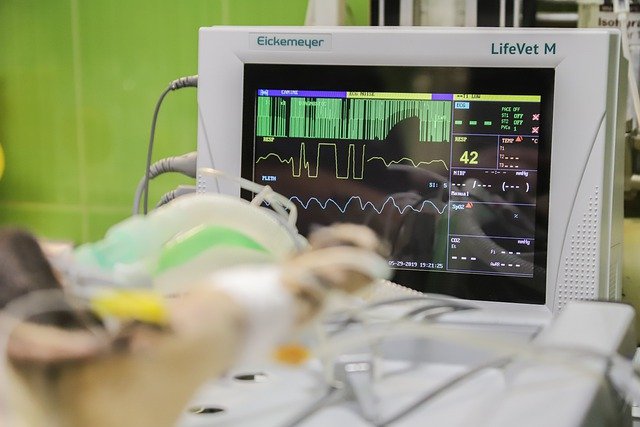Who can we trust, if not our doctors? Physicians see us at our most vulnerable; they pick us up when pneumonia or a nasty bout of the flu knocks us down, patch up our scrapes and bruises when we fall, and help steer us clear of bad health habits like failing to maintain that promised exercise schedule. Medicine is a constant source of support in our lives, with providers stepping into our lives as guides when we face trials of our bodies’ own makings. Given the care and support inherent in the doctor-patient relationship, trusting our providers should be easy — and yet, that confidence is far out of reach for many. As of 2014, only 34% of surveyed American patients reported trusting their doctors.
This crisis of belief is problematic on a number of fronts. Recent studies have found that increased trust has been strongly linked to better patient outcomes; those who believed in their providers were more likely to follow medical advice and maintain a long-term relationship with their doctors. Moreover, this positive correlation goes beyond resolving a one-time occurrence of the flu or other illness — it can impact a patient’s lifelong health. One study published in the Journal of Family Practice found trust to be one of the strongest predictors of whether patients kept to doctors’ lifestyle recommendations about diet, exercise, smoking, and sexual health. Those who listen to and have confidence in their providers are by and large healthier – so where is this adversarial relationship coming from?
For some, patient-provider negativity stems from the dramatic increase in out of pocket costs. The brunt of the American healthcare industry operates on a fee-for-service reimbursement model that charges for individual services rather than bundling care into a value-based package. The first method incentivizes doctors to order more tests and suggest treatments that the patient might not explicitly need. As a result, some clients distrust the medical advice they receive, thinking that their providers care more about profit than they do about patient well-being.
However, the conversation about cost is only one symptom of an overarching communication problem; even a complete and immediate switch to a value-based pricing system won’t solve all of healthcare’s trust barriers. The doctor-patient bond is like any other relationship: it requires communication, connection, and trust to thrive. Cost wariness is a major block to a productive connection in medicine, but it by no means is the only one. At the most foundational level, there needs to be a readily-accessible, two-way channel for conversation between providers and patients.
The industry model we muddle through today has sinkholes. Patients resist payment structures that prioritize treatment volume over value; providers struggle through overloaded schedules that prevent them from maintaining any regular communication with patients. With the rise of healthcare tech and big data, however, some companies may be on the verge of bringing the connection back into everyday care.
Forward Health stands apart from the typical provider practice, aesthetic, and pricing. As a subscription-based operation, Forward charges its members $150 per month for a comprehensive primary care experience. The company’s flagship office in San Francisco, California embraces the sleek, ultra-modern atmosphere of a tech store: new patients check in on iPads and step into full-body scanners before they ever meet their doctor. Forward makes information its advantage – the data gained from the scanners and other, more rote, blood and genetic testing, provides doctors with a detailed snapshot of their patient’s health. This influx of information doesn’t stop at the facility’s threshold; patients leave with a wireless scale, blood pressure cuff and watch that transmit their weight, blood pressure, sleep and exercise data back to Forward, providing a real-time glimpse into a patient’s health.
Importantly, this easy access to information goes both ways. Forward members can readily message simple questions to their doctors or nurses without going through the fuss and bother of waiting on hold or setting up a face-to-face meeting. Telemedicine options abound, eradicating the frustration inherent in a morning derailed for a fifteen-minute doctor’s appointment; traditional in-person primary care is of course covered. This new model knocks down the barriers to communication that exist in our current one: inconvenience, disorganization, inefficiency.
Trust is built not during long, one-time appointments, but over a longer term of periodic dialogue and the understanding that sharing data eradicates the need for the vast majority of time-consuming in-person visits. Consumers and investors undoubtedly believe in Forward’s promise as a relationship-based framework for care: the business raised $100 million in funding in 2014 and, according to a recent spotlight from Buzzfeed, is adding hundreds of new members to its client base. Forward’s communicative and tech-centered approach may be the model that comes to dominate the healthcare industry.
If we aim to rebuild trust in medicine, we need to prioritize a mode of patient care that allows — encourages, even — open communication between doctors and those they treat. Ultimately, the two parties have complementary goals: doctors wish to treat, improving the health status of their patients, and patients want to be treated, realizing the benefits of improved health. Switching to a value-based system is the first step in reframing the industry’s perspective to center on patients, but it won’t be the last; we need to foster an industry-wide culture and build the frameworks the healthcare industry needs to encourage open communication between patients and providers. Trust can only grow once providers engage the patient beneath the bump, bruises, and flu and forge a communicative and convenient connection for both parties.






